By Louise Irvine
This monumental Pangolin vase is the latest Ardmore piece to join the Wiener collection. Pangolins are believed to be the world’s most illegally trafficked wild mammals. In the last few years, Fée Halsted, the founder and creative director of Ardmore Ceramic Art, has supported the cause of the endangered pangolins with special exhibitions and donations.
It is estimated that 100,000 pangolins are captured by poachers every year in Asia and Africa and sent to China and Vietnam. The Pangolin’s meat is considered a delicacy and status symbol and is believed to increase virility. Its keratin scales are promoted as cures for a wide variety of conditions in traditional Chinese medicine from cancer to acne. The scales are dried, ground and roasted to relieve palsy, stimulate lactation and drain pus. The myth of the Pangolin’s medicinal value persists even though the scales are as effective as chewing fingernails which are also made of keratin. As a result of this illegal trafficking, all eight species of Pangolin are threatened with extinction.
When attacked, the pangolin rolls into an impenetrable ball which is how it got its name from the Malay expression for rolling up. In the wild, their overlapping hard scales protect them from most animal predators. Even big cats are outwitted as the keratin scales are too hard for a lion to bite through. However, their defence mechanism doesn’t protect them from poachers who just pick them up.
Scientists estimate that the Southern African Pangolin has been around for over 40 million years, adapting itself to the changing environment in order to survive. It is believed that they have a lifespan of about twenty years in the wild. Pangolins have strong clawed feet enabling them to open termite mounds for food. They are toothless and use their extremely long sticky tongues, which can be longer than their body, to collect their prey of ants and termites. Pangolins only come out of their burrows at night and rely on their well-developed sense of smell because of their poor eyesight. Some species live in trees and their strong tail aids climbing. They produce just one baby a year, which rides around on its mother’s back. With its armoured shell and peculiar slow-moving gait, the timid pangolin looks more like an anteater prepped for medieval battle than an animal under threat.
In July this year, authorities in Singapore seized 11.9 tons of pangolin scales from a container heading to Vietnam. More than 2,000 endangered Pangolins perished for this shipment which was valued at $35.7 million. There are numerous campaigns to raise awareness of the pangolin’s plight including a World Pangolin Day in February and an app Roll with the Pangolins. In 2017, Ardmore supported an exhibition focused on saving Pangolins in South Africa and artists, such as Thabo Mbhele, Bennet Zondo, and Qiniso Mungwe, produced several striking ceramic sculptures which helped raise money for the cause by their sales. See all the Pangolins in pottery now at WMODA in our Ardmore gallery.
Learn more about Pangolins in the National Geographic video
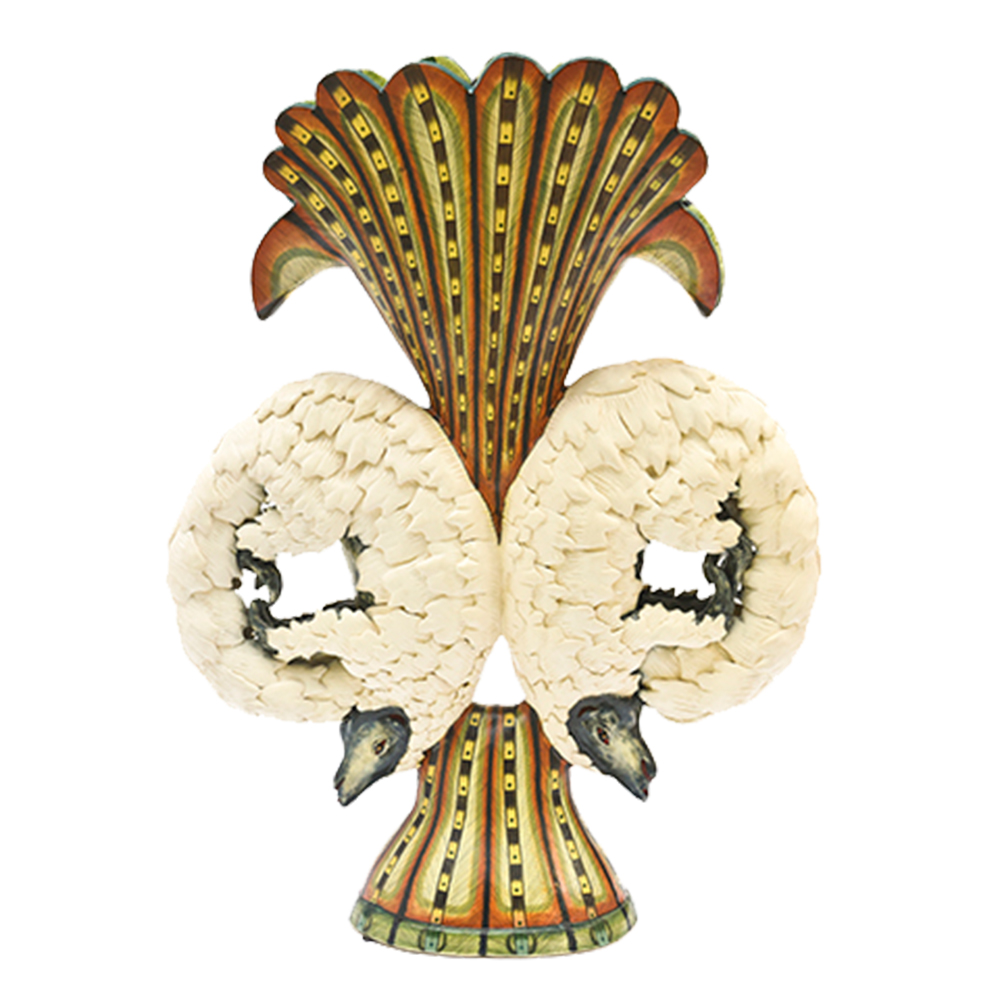
Ardmore Monumental Pangolin Vase
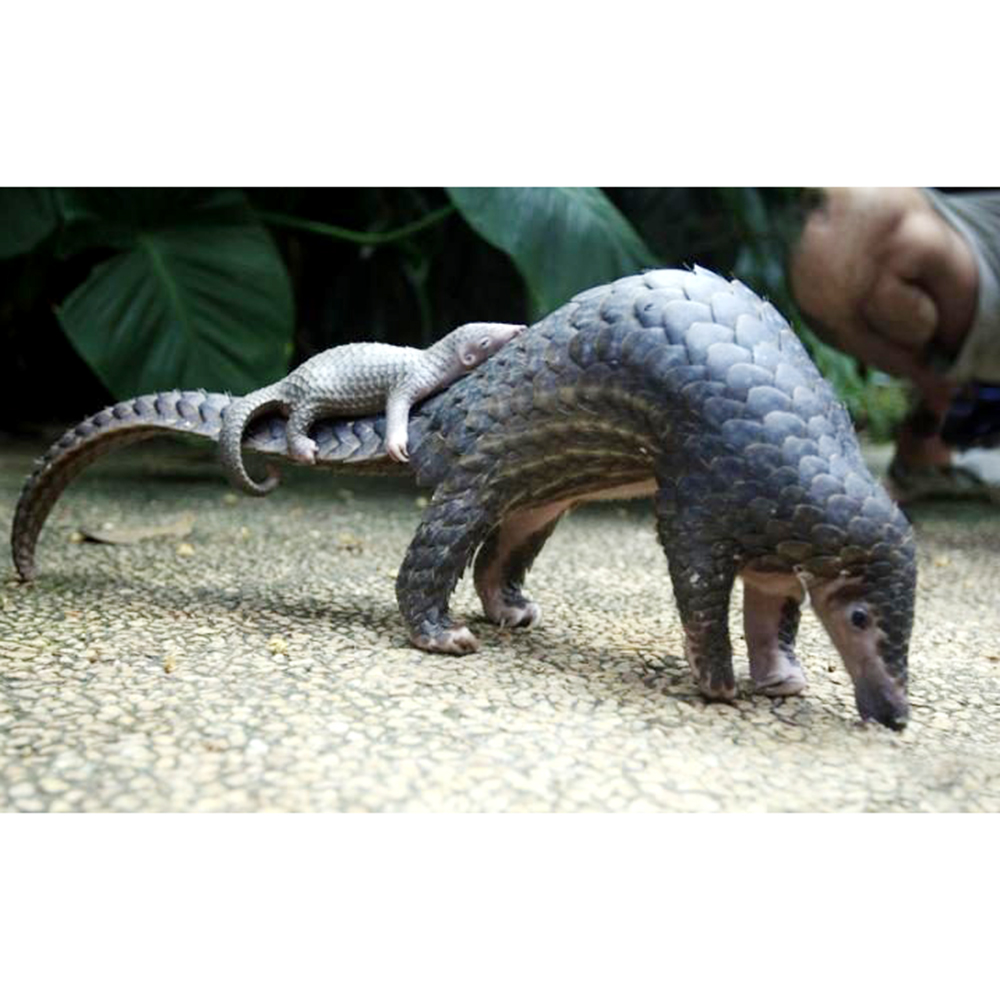
Pangolin with pup
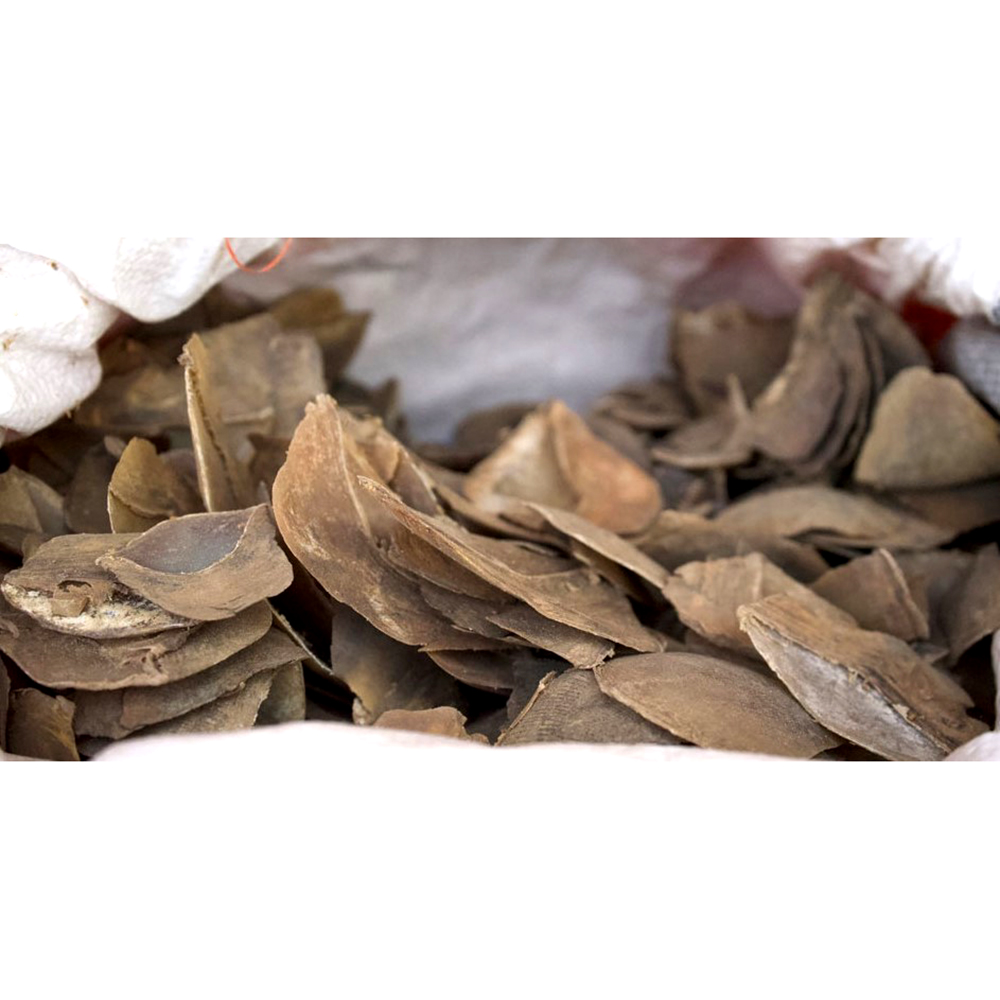
Pangolin scales
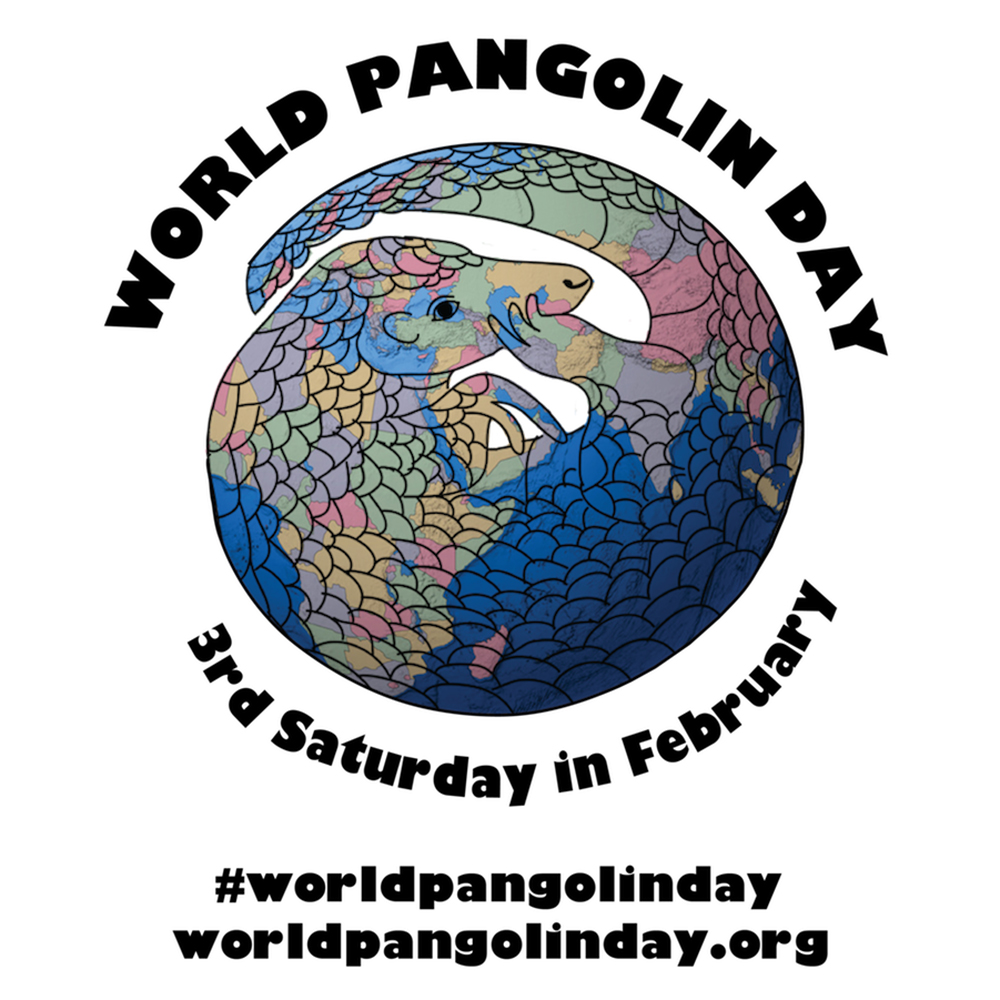
World Pangolin Day
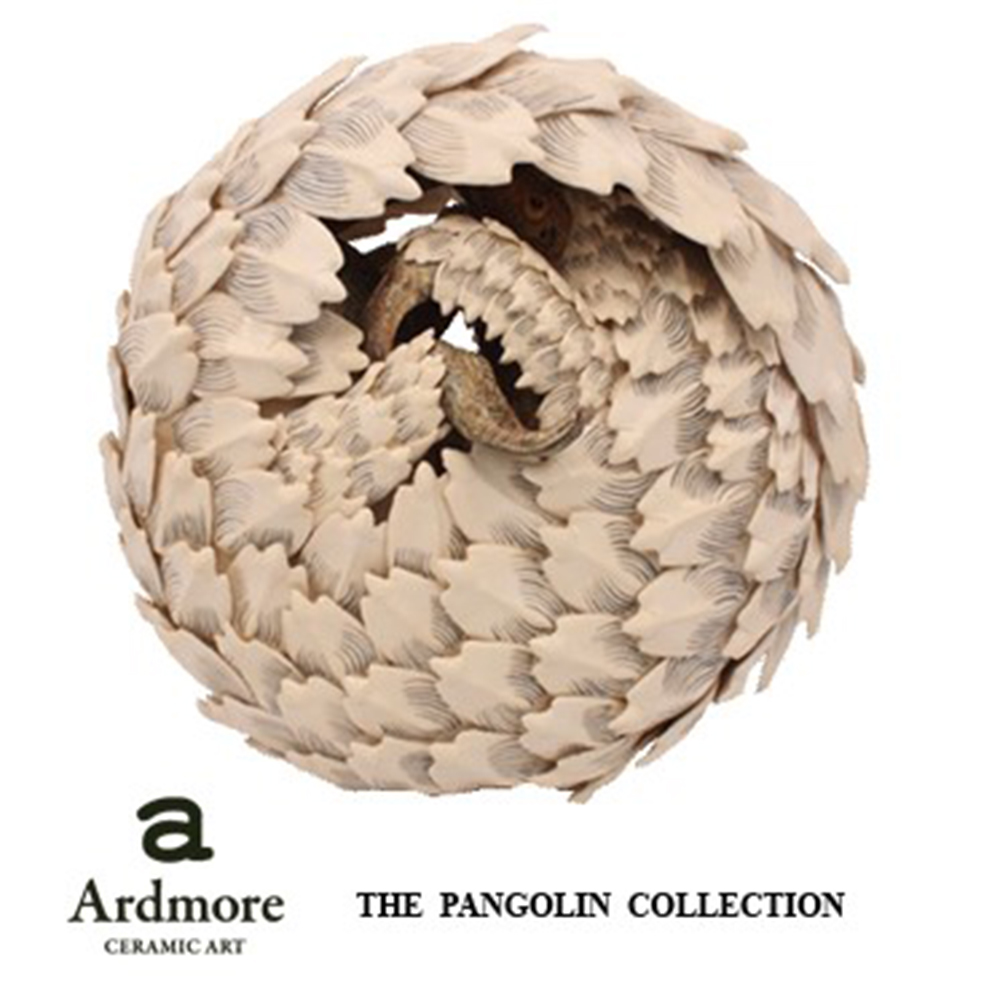
Ardmore Pangolin
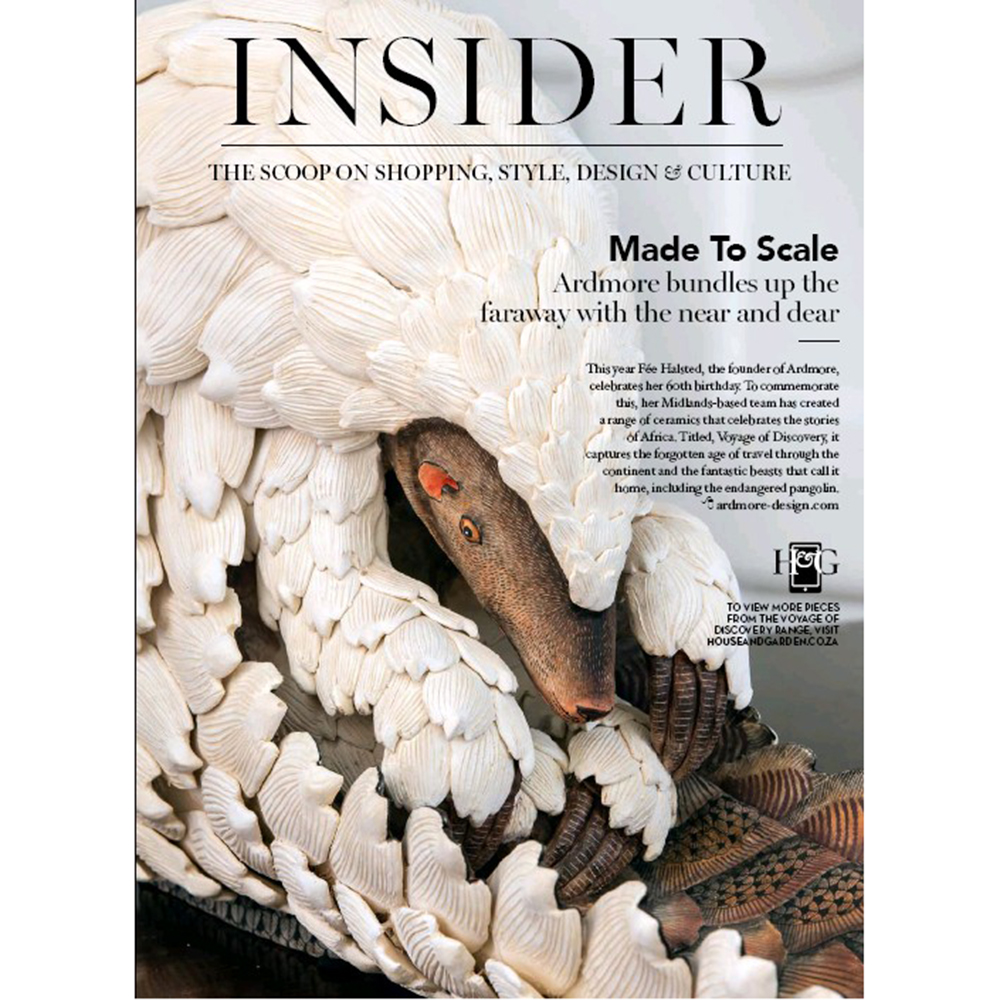
Ardmore Pangolin in Insider Magazine
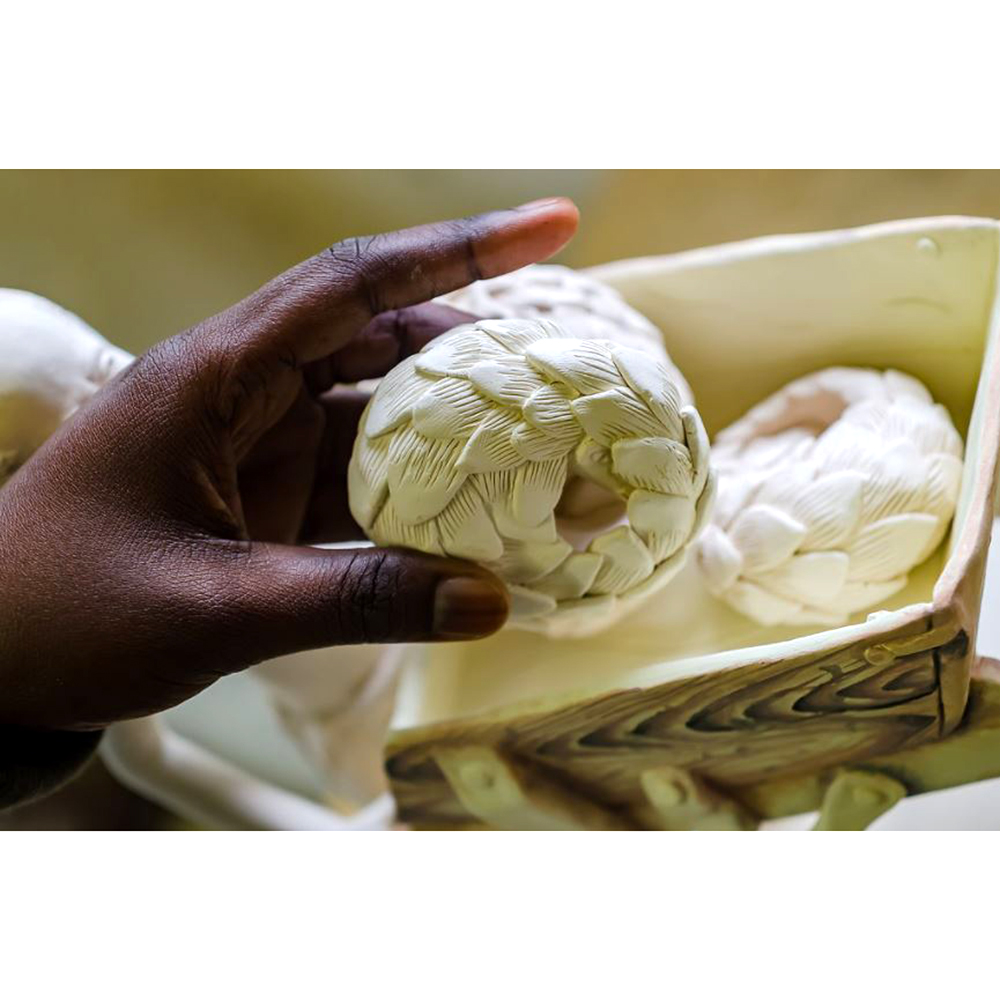
Ardmore Pangolins
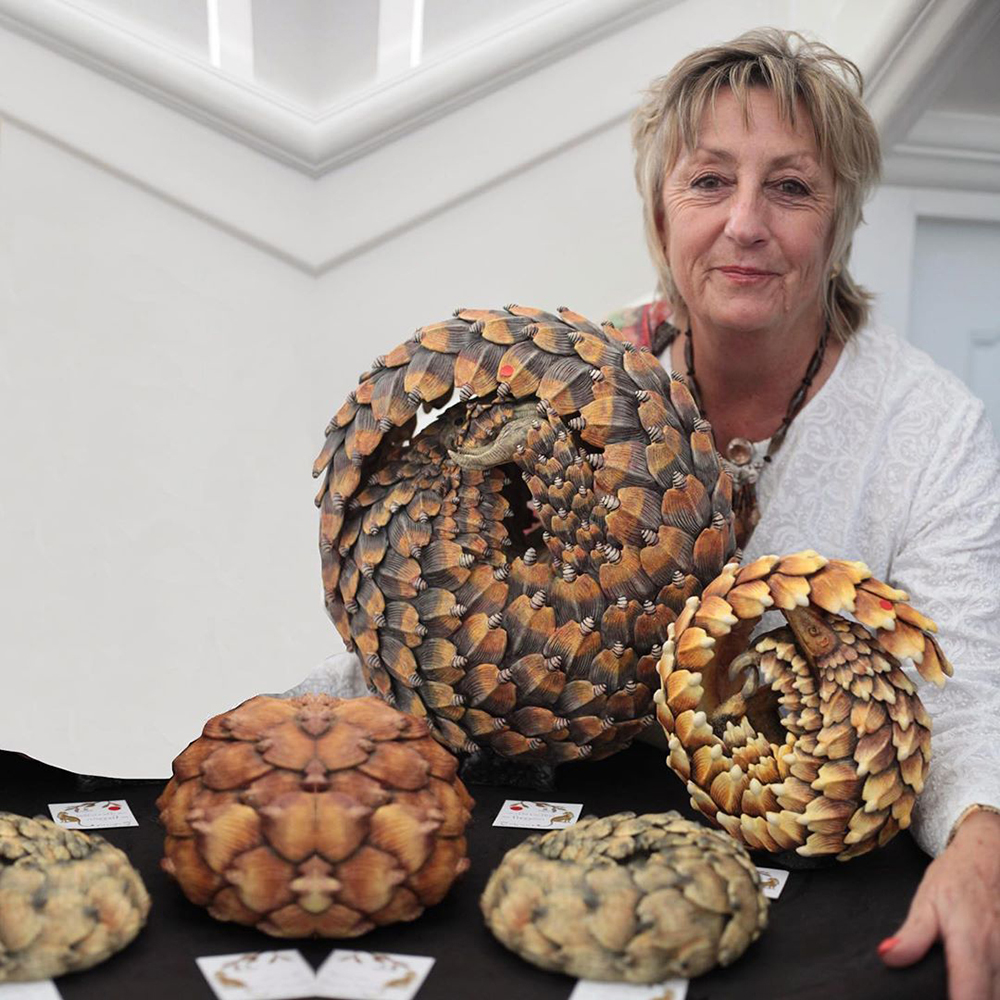
Fée Halsted with Ardmore Pangolins
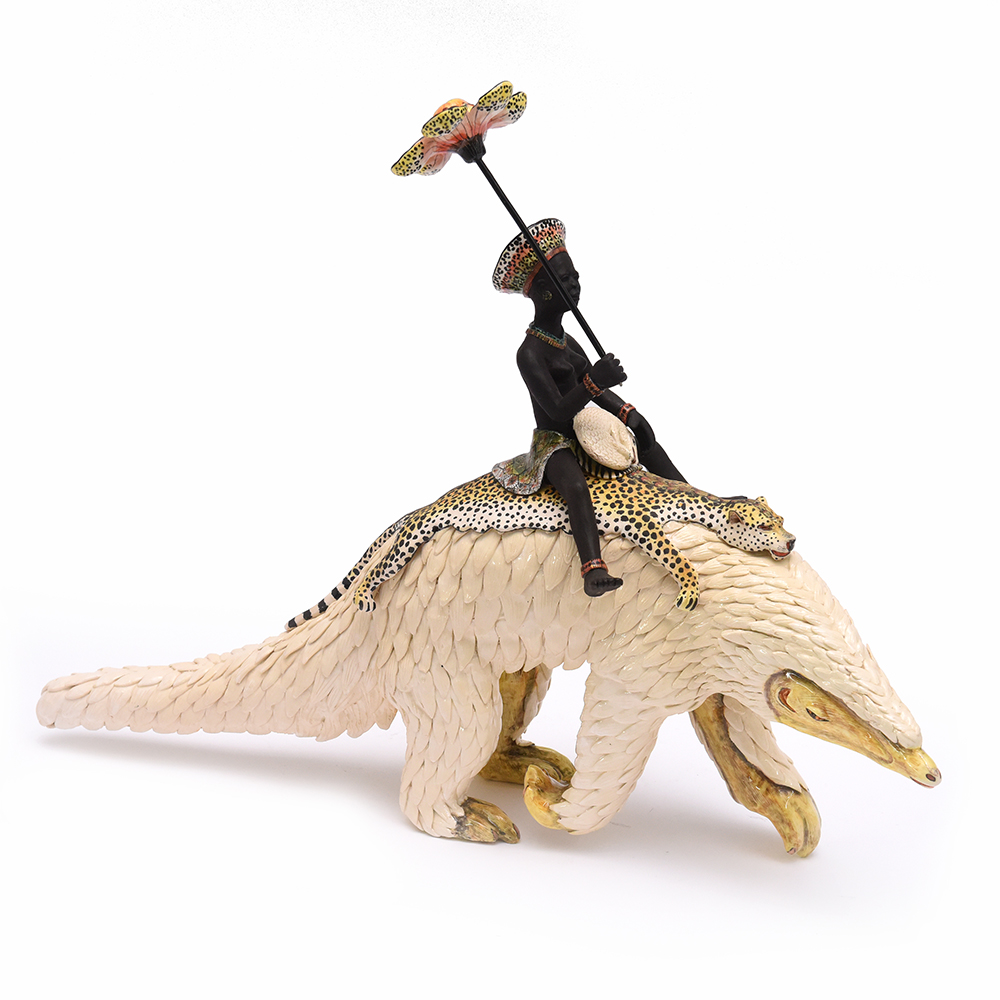
Ardmore Pangolin Traveler
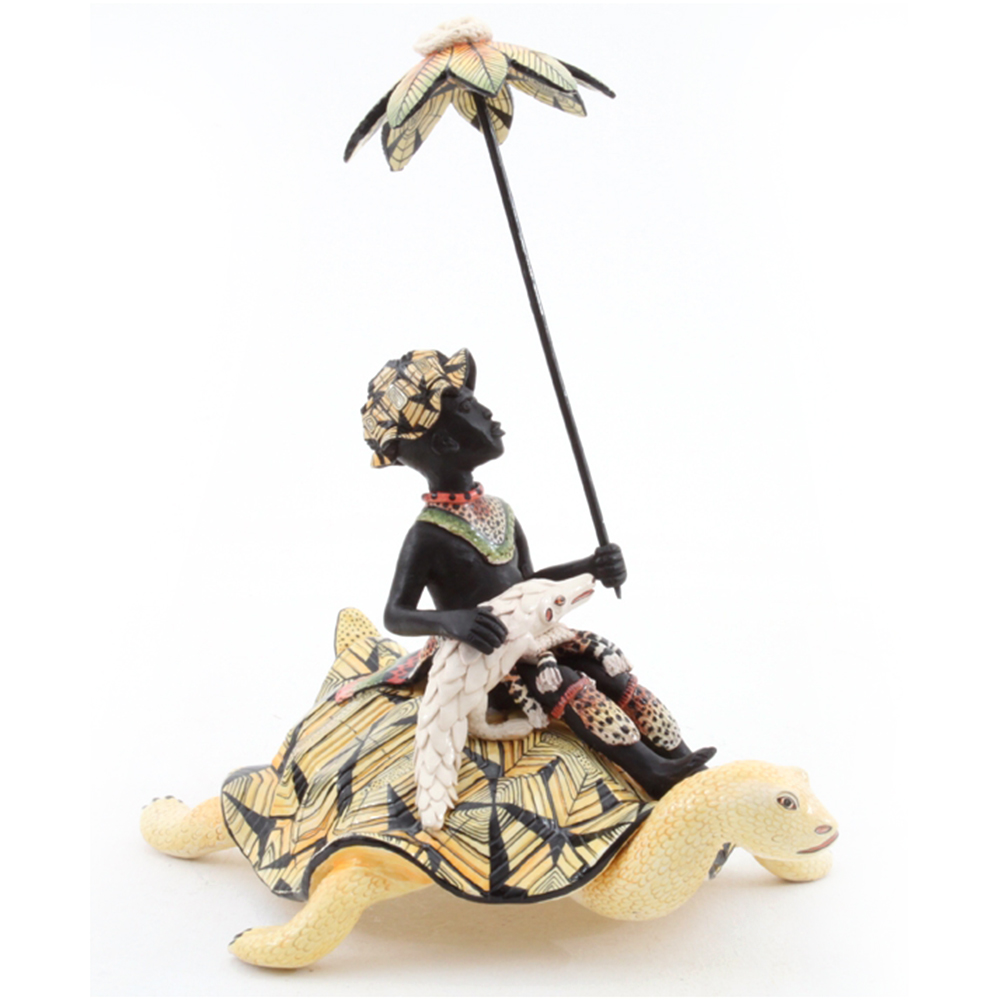
Ardmore Traveler with Pangolin
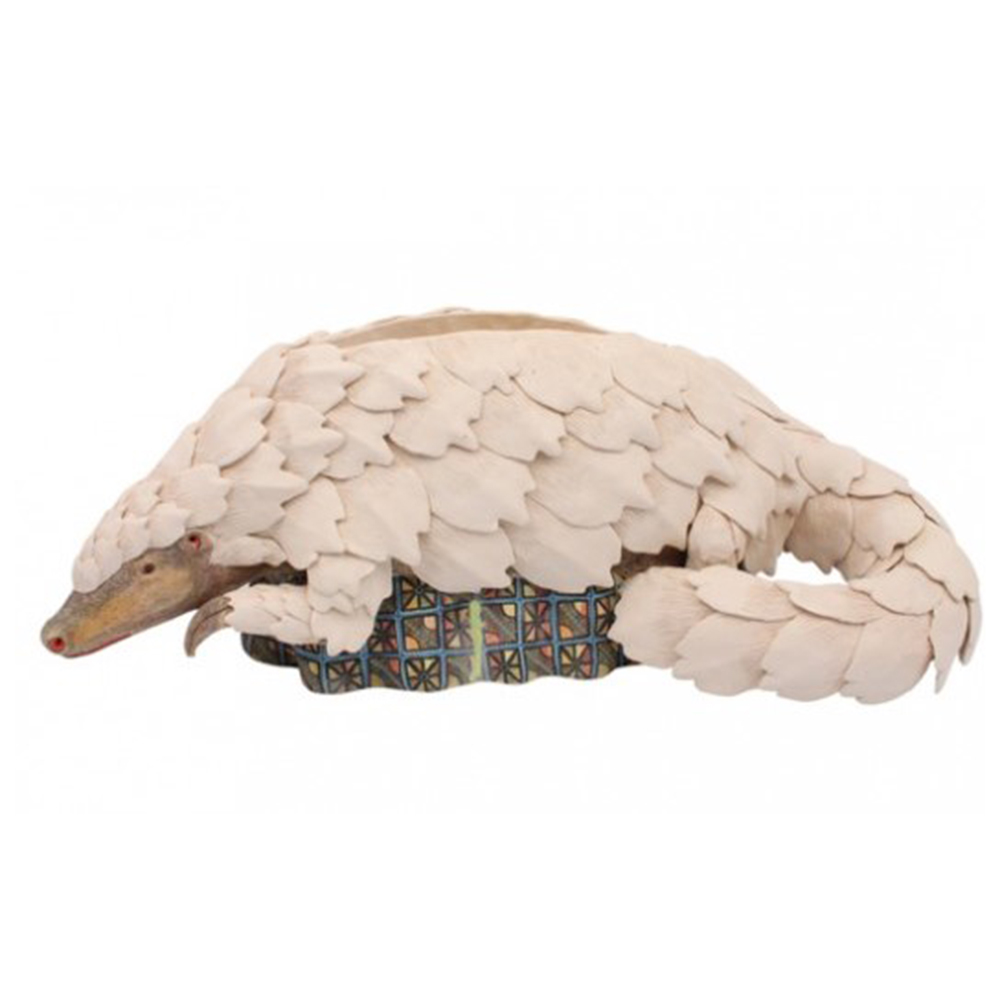
Ardmore Pangolin
